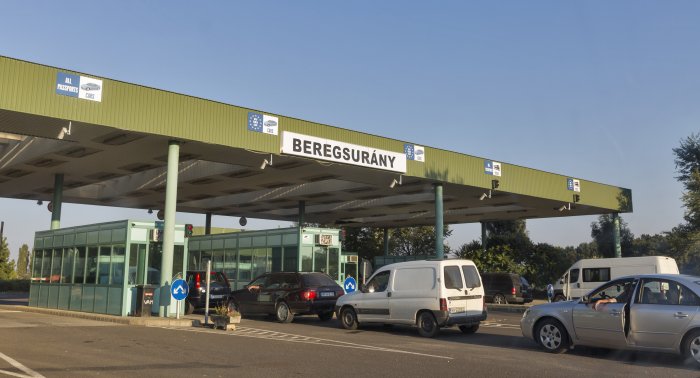China-CEE 16+1 Summit spurs flurry of talks, agreements

Eximbank
The China-CEE 16+1 Summit held in Budapest at the beginning of this week resulted in scores of presentations, dozens of agreement signings and hundreds of meetings, formal and informal, between delegates from China, Hungary and the other nations of Central and Eastern Europe.
Sino-CEE Fund Chairman Jiang Jianqing and Magyar Eximbank CEO Zoltán Urbán sign the agreement on Hungary joining the EUR 10 billion fund. (Photo: Eximbank.)
Declaring that a “new world order” had arrived, Péter Szijjártó, Hungary’s Minister of Foreign Affairs and Trade, laid out the case for increased investment and trade between China and Central Europe in general, and between China and Hungary in particular on Monday afternoon.
Speaking prior to a round table discussion on the development of small and medium-size enterprises (SMEs) organized by Magyar Eximbank – part of the China-CEE 16+1 Summit hosted in Budapest – Szijjártó declared that what he termed “the old phenomenon” whereby capital only flowed from West to East, looking for cheap labor, was no longer valid.
“The new phenomenon is that the capital flows as much from East to West as from West to East. And we witness big companies from Far East Asia being successful companies, gaining more and more shares on the European and American markets,” he said.
In an auditorium packed with a mixture of Chinese, Central European and domestic business people, the minister argued that the countries of Central Europe had already made successful efforts to tap into the Chinese economic “phenomenon.”
“We have never looked at this new world order as a threat: we have always looked at it as an opportunity. I think it’s pretty much rational from our perspective, because we can’t stop it anyhow, and if you can’t stop it, then try to take as much profit out of it as you can,” he said.
The future success of national economies in the region depends on attracting industries which effectively combine manufacturing with digitalization, and the surest way to achieve this amalgam is to attract large, hi-tech investors from the fast-growing economies of the Far East and China to set up bases in central Europe – a process that has already begun with examples including Wanhua, Huawei and BYD establishing bases and manufacturing facilities in Hungary.
“The future success of the small and medium-size companies of our economies will depend on whether they are able to become parts of the supplying chains of the big investors who invent and then apply the newest possible technologies,” the minister argued.
In response, Shan Zhong, Minister of Commerce of the People’s Republic of China, said relations between China and the region have been growing dynamically since 2010.
“It is fair to say that the commercial cooperation between China and the CEE countries has become one very important component of the overall cooperation between China and the region,” he said, with trade between China and the region worth USD 58.7 billion in 2016.
At the same time, China’s investment in the region has reached more than USD 9 bln “and we have reason to expect it will surpass USD 20 bln [in the near future]. This is based on very serious calculations,” he said.
The minister noted that in October, the 19th National Congress of the Communist Party of China “was successfully concluded” including the statement that “China’s door is opening up and won’t close: it will only open wider and wider.”
China, he said, “stands ready to share development opportunities with all countries around the world.”
Financial cooperation
At another Magyar Eximbank round table on finance, also held on Monday, Richárd Végh, CEO of the Budapest Stock Exchange, stressed how moves taken by the National Bank of Hungary (MNB) had substantially improved Hungarian-Chinese financial relations in recent years.
Specifically, in September 2013, the MNB signed a bilateral foreign exchange swap agreement with its Chinese counterpart, followed by the launch of the so-called Budapest Renminbi Initiative, further increasing the sources of funding and investment opportunities between the two countries, Végh said.
Other moves, including the liberalization of currency restrictions and Hungaryʼs first ever “Panda” bond issue of RMB 1 billion earlier this year, along with scientific and research cooperation between Hungarian financial institutions and Chinese universities, all reveal the ever-deepening financial links between the two countries, Végh added, saying: “The road ahead is the way for fast-growing relationships.”
György Barcza, chief executive of the State Debt Management Center, emphasized the pioneering value of Hungary’s first Panda bond issue. Responding to a question from MTI, the state news agency, he said further issues within a RMB 3 bln (EUR 0.4 bln) framework were under consideration, “depending on market options” in the next two years.
Waylon Yeh, global vice-president of China’s International Business Settlement Holdings, said Hungary was an attractive investment target for China, saying it is a “great advantage” that as soon as investments begin in Central and Eastern Europe, the doors open to the whole of Europe.
Dániel Palotai, executive director of the National Bank of Hungary, urged businesses forum participants to request commercial banks to develop renminbi-based products to meet their commercial needs, as the central bank has little influence on financial institutions in this regard, he said.
Hungary signs up to funds
The summit also saw the signing of an agreement on setting up the China-CEE Fund II, the second phase of the China-Central and Eastern Europe Investment Cooperation Fund; Eximbank is making a USD 70 million contribution, but expects to see at least USD 140 mln invested in Hungary in return in the coming years. The total planned size of the fund is close to USD 1 billion, and it will target energy, telecommunications, infrastructure, technology, innovation, manufacturing and processing, agriculture, education, medicine, tourism and financial services.
The original fund was established in 2013, with Hungary investing USD 30 mln. In its four-year life span, a total of 13 investments were implemented across the region, USD 91 mln of which was in Hungary.
Eximbank also signed an agreement with the Bohai Transport Fund at the summit on developing intelligent public transport systems.
The day after, Hungary penned yet another agreement to join the EUR 10 billion Sino-CEE Fund. The accession document was signed by Eximbank CEO Zoltán Urbán and Sino-CEE Fund Chairman Jiang Jianqing.
The SINO-CEE Fund investment fund was the result of an agreement reached between the Chinese government and Central and Eastern European countries at the fifth China-CEE 16+1 summit in Riga in November 2016. The fund focuses on the promotion of investment in Central and Eastern Europe.
Urbán said after the signing: “Hungary will invest EUR 50 million... The fund will make at least EUR 300 million in investments in Hungary under the contract.” The fund is state-financed, but operates on a market basis.
SUPPORT THE BUDAPEST BUSINESS JOURNAL
Producing journalism that is worthy of the name is a costly business. For 27 years, the publishers, editors and reporters of the Budapest Business Journal have striven to bring you business news that works, information that you can trust, that is factual, accurate and presented without fear or favor.
Newspaper organizations across the globe have struggled to find a business model that allows them to continue to excel, without compromising their ability to perform. Most recently, some have experimented with the idea of involving their most important stakeholders, their readers.
We would like to offer that same opportunity to our readers. We would like to invite you to help us deliver the quality business journalism you require. Hit our Support the BBJ button and you can choose the how much and how often you send us your contributions.








